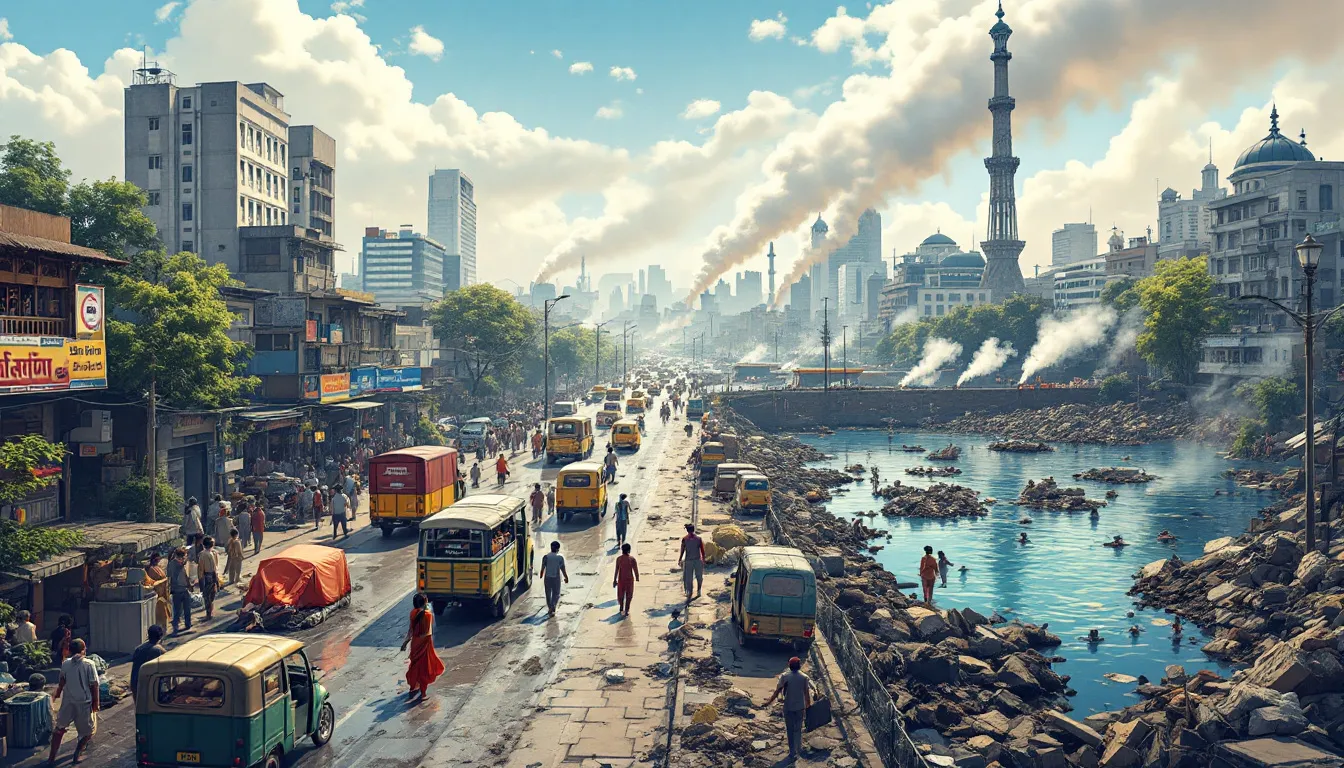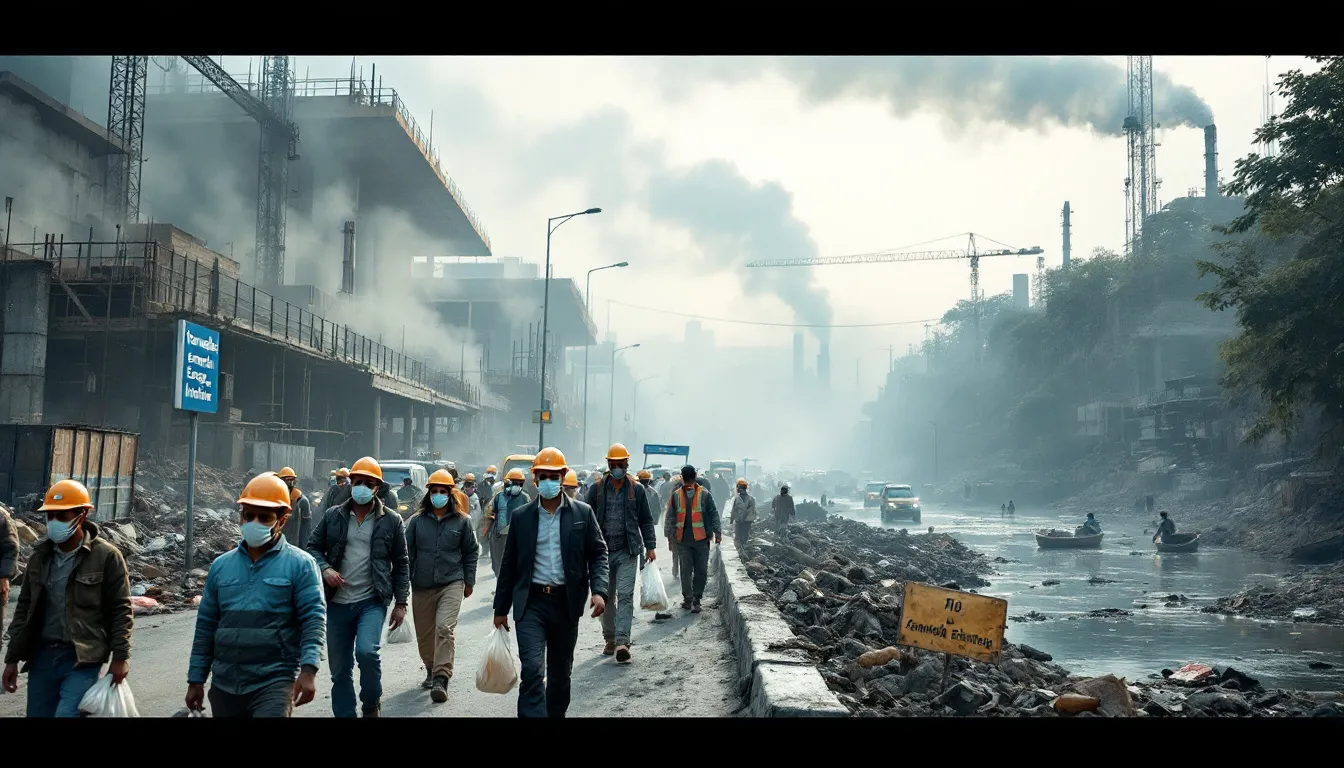India’s Environment in 2025: Where We’re Falling Short & What’s Urgent

India stands at a critical juncture in 2025. While the country has made notable progress in renewable energy capacity, green cover initiatives, and climate action policies, the reality is that more than half of India’s population remains vulnerable to climate impacts. From extreme weather events and urban heat islands to rising greenhouse gas emissions, the urgency for sustainable solutions has never been greater.
This article explores the challenges, state-level performance, urgent gaps, and the solutions that India must prioritize in 2025.
Introduction to India’s Environmental Challenges in 2025
India’s environment is under severe strain from multiple fronts:
-
Air pollution continues to be among the world’s worst, causing thousands of medically certified deaths annually.
-
Waste management systems in smaller cities and peri-urban areas remain inadequate, with mounting plastic and biomedical waste.
-
Despite rapid growth in installed renewable energy capacity, fossil fuels like coal still dominate the country’s energy mix.
-
Water stress is deepening, especially in states like West Bengal and regions with poor irrigation planning.
According to the State of India’s Environment Report 2025, nearly half of the country’s population is exposed to high levels of climate risks, particularly in northeastern regions and rural areas.
Extreme Weather Events and Their Impact
The last decade has witnessed an alarming rise in extreme weather events in India. Floods, droughts, cyclones, and deadly heatwaves have affected millions:
-
Two-thirds of northeastern regions now experience recurring climate disasters.
-
Urban heat islands in Delhi, Mumbai, and other cities have pushed summer temperatures beyond 45°C, creating life-threatening conditions.
-
In recent years, India has recorded a sharp increase in medically certified deaths due to heat stress and flooding.
Data Snapshot (First Half of 2025)
|
Event Type |
Affected Population (Millions) |
States/UTs Impacted |
|---|---|---|
|
Heatwaves |
110+ |
Delhi, Rajasthan, UP |
|
Floods |
85+ |
Assam, Bihar, WB |
|
Cyclones |
35+ |
Odisha, Andhra, TN |
Long-term action is required to build resilience. Policy measures such as early warning systems, resilient infrastructure, and cooling corridors in smaller cities must be urgently prioritized.
Water Scarcity and Management
India’s per capita water availability has been falling for decades. As climate change disrupts rainfall cycles, the crisis is deepening:
-
West Bengal and Maharashtra face acute water stress due to industrial over-extraction and poor groundwater recharge.
-
Andhra Pradesh has emerged as a leader in clean energy governance and water conservation, integrating solar-powered irrigation and precision farming.
-
The Indian government has announced new dams and water storage capacity, but sustainable practices like rainwater harvesting, watershed management, and decentralized treatment remain under-implemented.
Policy focus must shift from mega-projects to state-level performance and local water management systems.
Climate Change and Its Devastating Impacts

India’s environment in 2025 is deeply shaped by the impacts of global warming:
-
Greenhouse gas emissions remain on the rise despite commitments.
-
Forest cover continues to shrink in peri-urban and rural areas, reducing biodiversity.
-
While green hydrogen and rooftop solar are emerging solutions, their adoption is still limited.
-
Climate finance access remains a bottleneck—India needs billions annually to achieve its low-carbon transition.
Urgent Needs:
-
Scale-up rooftop solar adoption in other cities beyond metros.
-
Accelerate green hydrogen projects to decarbonize industry.
-
Secure international climate finance to meet net-zero targets.
Sustainability and Development: The Balancing Act
India’s GDP growth is tightly linked to its environmental performance. A chest-thumping focus on economic growth without parallel environmental safeguards risks undoing progress:
-
Coal and fossil fuels still account for over 65% of energy production, despite renewable capacity expansion.
-
Infrastructure growth in peri-urban areas is outpacing sustainable planning, worsening waste and air pollution.
-
Sustainable development is critical for achieving UN SDGs and ensuring equitable progress across rural and urban India.
🌱 Case Study – Andhra Pradesh Andhra Pradesh has demonstrated how state-level clean energy policies can integrate agriculture, industry, and urban development. By aligning renewable energy projects with local employment and community participation, it shows a scalable model for other states.
Biodiversity and Conservation Efforts
India’s biodiversity—spanning forests, wetlands, and mountain ecosystems—is under heavy threat:
-
Deforestation in peri-urban belts is eroding wildlife corridors.
-
Union territories like the Andaman & Nicobar Islands face coastal biodiversity loss due to rising sea levels.
-
Conservation efforts are often announced but underfunded.
To safeguard biodiversity:
-
Community-led conservation in rural areas must be incentivized.
-
Forest cover restoration through agroforestry and multi-layer farming systems is essential.
-
Strengthen wildlife corridors between protected areas.
Health and Wellbeing Impacts
India’s environmental crisis is increasingly a public health crisis:
-
Air pollution is linked to more than 1.7 million deaths annually (WHO Report).
-
Water pollution from untreated sewage continues to threaten peri-urban and rural communities.
-
Rising temperatures are linked to increases in heat-related illnesses and hospitalizations.
-
The healthcare system is already overstretched and climate change is worsening its burden.
Urgent measures:
-
Expand climate-resilient healthcare infrastructure.
-
Address air pollution with stricter industrial emission norms.
-
Ensure waste management reforms to reduce groundwater contamination.
Final Words

India’s environment in 2025: where we’re falling short & what’s urgent is clear—progress has been made, but it is not enough. Nearly half of India’s people remain at risk from climate impacts. While the Indian government has ambitious plans, the gap between policy measures and on-ground execution is wide.
The coming decade must focus on:
-
Accelerating renewable energy capacity with a shift away from coal.
-
Building resilience against extreme weather in both rural and urban areas.
-
Investing in climate finance, healthcare, and sustainable infrastructure.
-
Strengthening biodiversity conservation at state and community levels.
India cannot afford to delay. Climate action is not optional—it’s survival.
